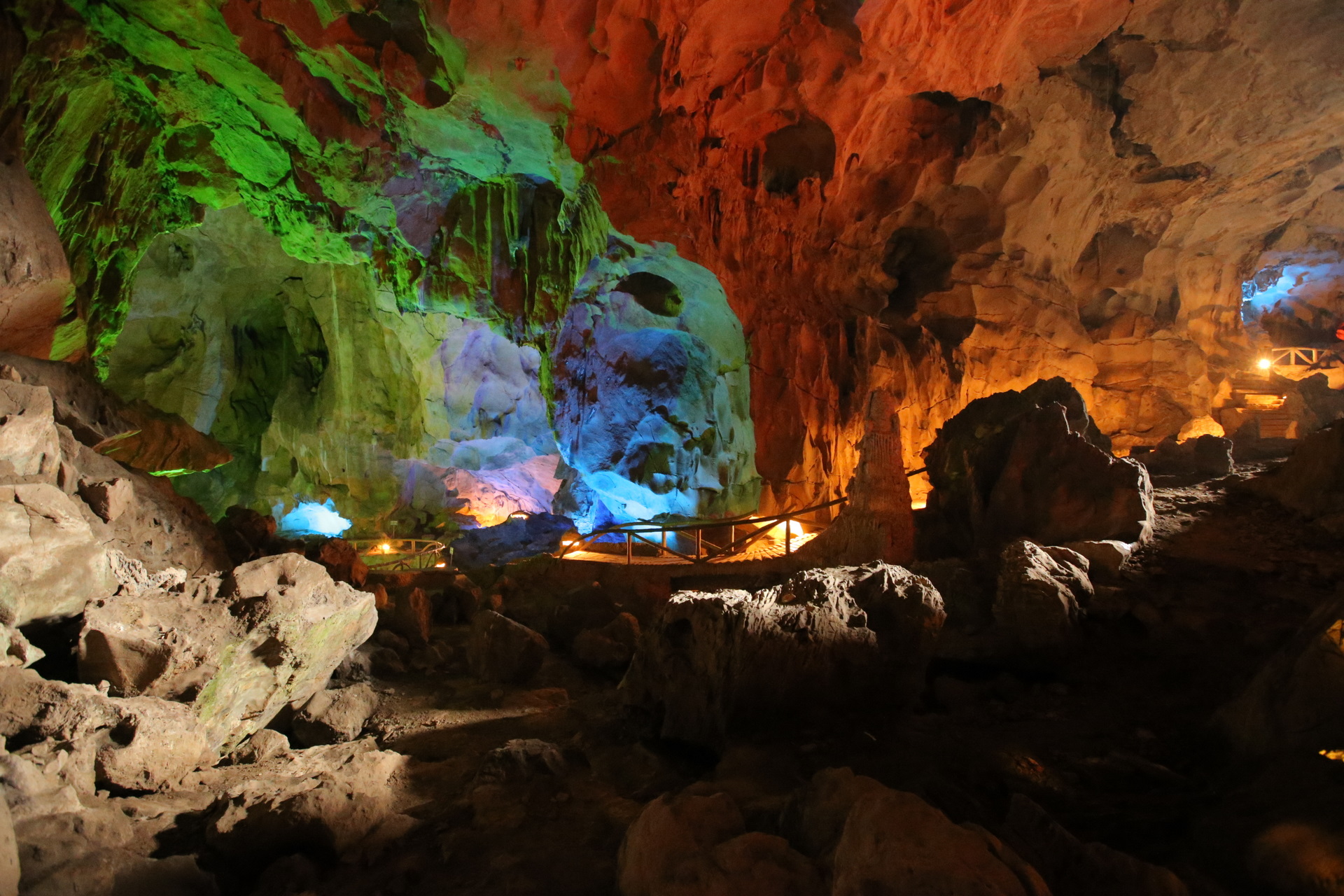Lạng Sơn on:
[Wikipedia]
[Google]
[Amazon]
Lạng Sơn () is a city in far northern
 The surface rocks in the area are a
The surface rocks in the area are a
Vietnam
Vietnam or Viet Nam ( vi, Việt Nam, ), officially the Socialist Republic of Vietnam,., group="n" is a country in Southeast Asia, at the eastern edge of mainland Southeast Asia, with an area of and population of 96 million, making i ...
, which is the capital of Lạng Sơn Province. It is accessible by road and rail from Hanoi
Hanoi or Ha Noi ( or ; vi, Hà Nội ) is the capital and second-largest city of Vietnam. It covers an area of . It consists of 12 urban districts, one district-leveled town and 17 rural districts. Located within the Red River Delta, Hanoi is ...
, the Vietnamese capital, and it is the northernmost point on National Route 1.
History
Due to its geography as Vietnam's gateway to China, Lạng Sơn and its ancient citadel have been in the path of many invasions, and were the site of three French defeats during the colonial era. Occupied by Qing forces during the military buildup that preceded the Sino-French War, the city was occupied byFrance
France (), officially the French Republic ( ), is a country primarily located in Western Europe. It also comprises of overseas regions and territories in the Americas and the Atlantic, Pacific and Indian Oceans. Its metropolitan area ...
after the two-week Lạng Sơn Campaign in February 1885. However, the brigade there conducted a hasty retreat after a failed attack at the Battle of Bang Bo
The Battle of Bang Bo, known in China as the Battle of Zhennan Pass ( zh, 鎮南關之役), was a major Chinese victory during the Sino-French War (August 1884 – April 1885). The battle, fought on 23 and 24 March 1885 on the Tonkin-Guangxi bor ...
into China; the " retreat from Lạng Sơn" became the most controversial aspect of the war and led to the fall of Jules Ferry
Jules François Camille Ferry (; 5 April 183217 March 1893) was a French statesman and republican philosopher. He was one of the leaders of the Moderate Republicans and served as Prime Minister of France from 1880 to 1881 and 1883 to 1885. He ...
's ministry. Outnumbered French colonial forces clashed with the Japanese 5th Division in the Battle of Lạng Sơn during the Japanese Vietnam Expedition on 22 September 1940. The French were again compelled to retreat hastily. In 1945 it was again the scene of heavy fighting during the Japanese coup d'état in French Indochina
The Japanese ''coup d'état'' in French Indochina, known as , was a Japanese operation that took place on 9 March 1945, towards the end of World War II. With Japanese forces losing the war and the threat of an Allied invasion of Indochina imm ...
.
After the end of the Pacific War, the French colonial army established a permanent garrison there, which served as the logistics hub for the French border fortresses. It was evacuated in 1950 during Võ Nguyên Giáp
Võ Nguyên Giáp (; 25 August 1911 – 4 October 2013) was a Vietnamese general and communist politician who is regarded as having been one of the greatest military strategists of the 20th century. He served as interior minister in President ...
's offensive against the French border forts, considered a turning point in the Indochina War
The First Indochina War (generally known as the Indochina War in France, and as the Anti-French Resistance War in Vietnam) began in French Indochina from 19 December 1946 to 20 July 1954 between France and Việt Minh (Democratic Republic of Vi ...
. The city was the center of fighting during the Sino-Vietnamese War
The Sino-Vietnamese War (also known by other names) was a border war fought between China and Vietnam in early 1979. China launched an offensive in response to Vietnam's actions against the Khmer Rouge in 1978, which ended the rule of the C ...
of 1979, and sustained extensive damage.
Geology and climate
Permian
The Permian ( ) is a geologic period and System (stratigraphy), stratigraphic system which spans 47 million years from the end of the Carboniferous Period million years ago (Mya), to the beginning of the Triassic Period 251.9 Mya. It is the last ...
limestone, overlain by the early Triassic
The Triassic ( ) is a geologic period and system (stratigraphy), system which spans 50.6 million years from the end of the Permian Period 251.902 million years ago (Year#Abbreviations yr and ya, Mya), to the beginning of the Jurassic Period 201.36 ...
Lang Son Formation, consisting of flyschoid beds with interbedded sandstones, siltstones and clay shales and some felsic volcanics.''Journal of Geology'' - Issues 15-20 2000 - Page 8 "Lang Sơn Formation of Induan age, lying unconformably upon Upper Permian limestone in the vicinities of Lạng Sơn Town, Bản Thí, Đông Mỏ, Chợ Bãi and Hữu Lũng, includes medium-grained sandstone rhythmically interbedded with .." This place even can experience snow in the coldest moments of winter although Vietnam is basically snow free, it and the whole of Northern Vietnam
Northern Vietnam ( vi, Bắc Bộ) is one of three geographical regions within Vietnam. It consists of three administrative regions: the Northwest (Vùng Tây Bắc), the Northeast (Vùng Đông Bắc), and the Red River Delta (Đồng Bằng S ...
is in an area of the subtropical climate.
See also
*Pingxiang
Pingxiang () is a medium-sized prefecture-level city located in western Jiangxi province, People's Republic of China.
Geography and climate
Pingxiang is a city situated near the border of Jiangxi with Hunan province. Approximately 110 kilometer ...
References
{{DEFAULTSORT:Lang Son Provincial capitals in Vietnam Districts of Lạng Sơn province Populated places in Lạng Sơn province Cities in Vietnam Lạng Sơn province